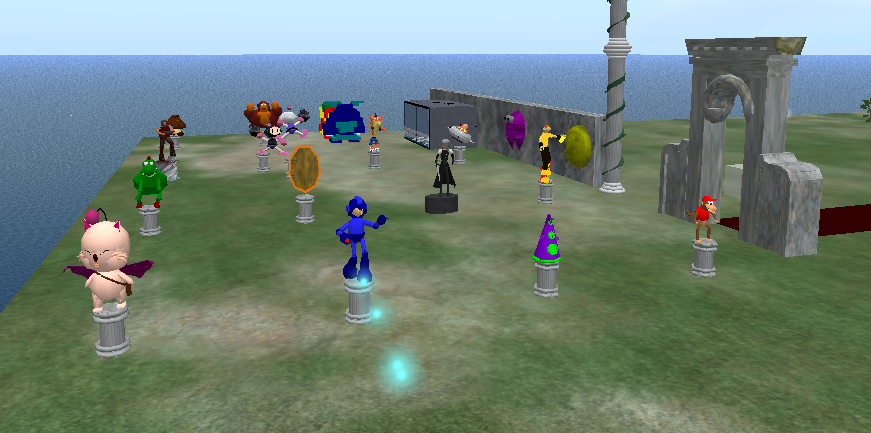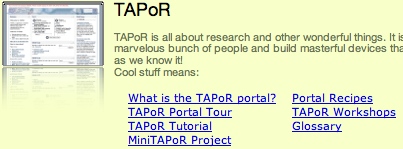From Hugh McLeod’s blog gapingvoid.com I discovered McGill Management prof, Henry Mintzberg. Anyone who has a page dedicated to beaver sculptures deserves to be praised, but Mintzberg writes clear, wise, and critical essays like Beyond Selfishness (with Robert Simons and Kunal Basu for the Sloan Management Review, Fall, 2002). Beyond selfishness takes aim at the “greed is good”, heroic leadership, shareholders’ value ideology that seems to keep on surviving evidence that none of this is good for society. Mintzberg makes obvious that we want robust and friendly not lean (skinny) and mean companies, schools and governments. His Leadership Beyond the Bush MBA asks an interesting question, “Has there been much public discussion at the Harvard Business School about the possible effect of its education on the conduct of his presidency?” (Bush is the first president with an MBA.) The issue isn’t really Harvard so much as management education, and in Mintzberg’s view, the way management students are taught decisiveness over experience of the situation.
Spectator: Mass e-vites can prompt gatecrashing
Well, I’m in the news today. I was interviewed for a story in the Spectator, Mass e-vites can prompt gatecrashing which is about how word of parties circulates quickly on the web leading sometimes to uninvited (and violent) guests. Or it is about how Facebook is dangerous. I have blogged before about Facing Facebook (and privacy), but what strikes me now about Facebook is how it offers an alternative to e-mail. The argument goes like this:
- Email was developed when the internet (Arpanet actually) was a trusted circle. The net was flat and only people like you and answerable to you were on it.
- Email doesn’t work on an internet that is broad, global, and open. Spam is just one symptom of the problem of scale.
- What we need is a messaging system that lets us control who can write us; a system that priviledges the local (in the sense that people in my university have easier access); and a system that lets me use different types of messaging for different purposes (from short announcements to photos to private messages.)
Sounds like Facebook, doesn’t it? Which is why my children seem to use Facebook for communication and email for file transfer (as in moving a copy of a paper to print out to the lab at school.) Unfortunately I can’t move off email the way Donald Knuth did – it is now woven into the work practices of the university. I’m also not comfortable with a commercial organization like Facebook or Google having all my messaging. But I can start moving to private social networks for certain purposes. To that end I set up a private network for my extended family on Ning where we can keep track of birthdays, family photos, and information.
How about an open source project to develop a distributed social network messaging environment that could interface with email, that could be run by individual units, and that could offer control over types and sources of messages?
Bubbles, Fluid and Prism: Site Specific Browsers
Bridging Desktop And Web Applications, Part 2 is a longish post about Site Specific Browser technologies like Prism, Bubbles and Fluid. I blogged Prism before – Peter O sent me this new link and one to Why We Need Web Apps on the Desktop.
It would seem that will always-on networking it becomes feasible to create applications that combine a customized browser with a server application.
Visit the Second Life Gaming Sculpture Garden

My students in the Digital Games course have all finished their historic game character sculptures for McMaster University’s Gaming Sculpture Garden (see earlier post). Thanks to the Library who have paid for the island and supported this project. Thanks to Dave Marhal who set up the garden, taught the students how to sculpt in Second Life, and then helped arrange the garden.
The experiment went better than I expected. Even the students used to Maya, who found SL fairly crude as a modeling environment, enjoyed the social aspect of an assignment in SL. Come visit by using this SLURL and teleporting. Click on the sculptures for an introduction to the characters. Take a tour around the island and its surreal spaces. Could you teach or learn in this space?

Text Analysis Developers Alliance Wiki

WikiTADA, the wiki of the loose Text Analysis Developers Alliance has a new interface that highlights the projects that are documenting themselves in an “open research” fashion.
Prism and XUL
My favorite underappreciated XML language XUL (XML User Interface Language) could become more than a Mozilla utility with Prism. To quote the Prism site:
Prism is a simple XULRunner based browser that hosts web applications without the normal web browser user interface. Prism is based on a concept called Site Specific Browsers (SSB). An SSB is an application with an embedded browser designed to work exclusively with a single web application. It doesn’t have the menus, toolbars and accoutrements of a normal web browser. Some people have called it a “distraction free browser” because none of the typical browser chrome is used. An SSB also has a tighter integration with the OS and desktop than a typical web application running through a web browser.
In other words, with Prism you can write your own interface in XUL that shows and hides what you want. You can then use it, in theory, to create network applications without all the interface overhead of a browser. How far are we from the browser as OS?
Thanks to Peter for this.
bleuOrange: revue de littérature hypermédiatique
 nt2 has launched an online review in French, bleuOrange | revue de littérature hypermédiatique. The review has a number of effective new media works including a French version of open.ended and the disturbing Sodome@home. Bravo to the folks at nt2 for this new site for the publication of hypermedia literature.
nt2 has launched an online review in French, bleuOrange | revue de littérature hypermédiatique. The review has a number of effective new media works including a French version of open.ended and the disturbing Sodome@home. Bravo to the folks at nt2 for this new site for the publication of hypermedia literature.
New Yorker: The News Business: Out of Print
The New Yorker has a depressing story The News Business: Out of Print about the collapse of the newspaper business.
trends in circulation and advertising––the rise of the Internet, which has made the daily newspaper look slow and unresponsive; the advent of Craigslist, which is wiping out classified advertising––have created a palpable sense of doom. Independent, publicly traded American newspapers have lost forty-two per cent of their market value in the past three years, according to the media entrepreneur Alan Mutter.
Most managers in the industry have reacted to the collapse of their business model with a spiral of budget cuts, bureau closings, buyouts, layoffs, and reductions in page size and column inches. Since 1990, a quarter of all American newspaper jobs have disappeared.
All this and in 10 days the Newseum will open in Washington. The Newseum site has a section of Today’s Front Pages where you can see, for example, Canadian front pages (if you burrow down by region). Perhaps we can watch newspapers disappear from this site – a time-lapse on news until there is one paper left (and what will that be?)
As a regular paper reader I have mixed feelings about the business or loss of it. I love to hate the Globe and Mail, which like many papers is becoming a collection of columns rather than a “news” paper, but I love to hate it in hand in the morning with a coffee. I also love Google News as a source of news and through the New Yorker essay, just discovered the Huffington Post. Google News, however, is built on the smart aggregation of news from real newspapers (as in places that pay people to write news.) How will aggregations work when there is nothing new (outside blog posts) being written? Will we end up with a few multinational news engines like Reuters and lots of opinions like mine? Will I have to get a Kindle to read in bed in the morning? (At least it would save going out in the cold to get the paper.)
Just how an Internet-based news culture can spread the kind of “light†that is necessary to prevent terrible things, without the armies of reporters and photographers that newspapers have traditionally employed, is a question that even the most ardent democrat in John Dewey’s tradition may not wish to see answered.
Michael Geist: iOptOut
Tired of getting unsolicted phone calls? Michael Geist has set up a web site, iOptOut to allow people to opt out of organizations that are exempted from the do-not-call registry. The site lets you specifically ask exempted organizations to not call you. We need more useful social sites like this.
Michael Geist explains iOptOut thus on his (excellent) blog:
I began to develop the site soon after the do-not-call bill became law. The premise is simple – under the law, exempted organizations (which include charities, political parties, polling companies, newspapers, and companies with a prior business relationship) are permitted to make unsolicited telephone calls despite the inclusion of a number in the do-not-call registry. However, organizations must remove numbers from their lists if specifically requested to do so.
Cybersyn: Before the Coup, Chile Tried to Find the Right Software for Socialism
In New York for my last f2f meeting of the MLA Committee on Information Technology I got a New York Times with an intriguing article about a Chilean management system, Cybersyn, titled Before the Coup, Chile Tried to Find the Right Software for Socialism.
Cybersyn was born in July 1971 when Fernando Flores, then a 28-year-old government technocrat, sent a letter to Mr. Beer seeking his help in organizing Mr. Allende’s economy by applying cybernetic concepts. Mr. Beer was excited by the prospect of being able to test his ideas.
He wanted to use the telex communications system – a network of teletypewriters – to gather data from factories on variables like daily output, energy use and labor “in real time,” and then use a computer to filter out the important pieces of economic information the government needed to make decisions.
Cybersyn was apparently semi-functional before the coup that overthrew Allende’s government and it was used to help manage around the small-business and truckers strike in 1972. I don’t think the Opsroom pictured above was ever fully operational, but visualization screens were important even if at the time they were hand-drawn slides that were projected rather than computer generated visualizations (see http://varnelis.net/blog/kazys/project_cybersyn on the chairs of the Opsroom.) Beer and the Chileans wanted Cybersyn to help them implement an alternative socialist economy that was managed in real time rather than “free” and chaotic or planned in the heavy handed way of most socialist economies of the time.
Rooting around, I found a good article about Cybersyn and the English visionary designer Stafford Beer from 2003 in the Guardian by Andy Beckett, Santiago Dreaming. It turns out that Beer gave the Massey Lectures in 1971 and they have been reprinted by Anansi as Designing Freedom. He also moved part-time to Toronto in the 80s where his last partner, Dr. Allenna Leonard of Metaphorum still resides. He died in 2002.
Another interesting thread is Fernando Flores who was the political lead of Cybersyn and the person that recruited Beer for the project. After the coup, Flores went to the US and got a Ph.D. in Computer Science collaborating with Terry Winograd, and being influenced by Maturana, also Chilean. That’s right – the Flores of Understanding Computers and Cognition. He is now back in Chile as a senator and supports various projects there.
The common thread is that Beer, Flores and Maturana all seem interested in viable systems in different spheres. They were applying cybernetics.
